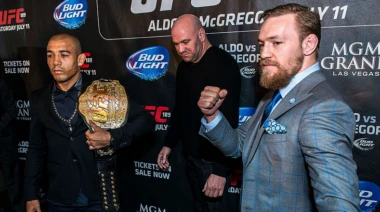The Significance of Joint Health and Movement in Athletic Training
Recently, there has been a surge of Facebook re – posts featuring UFC fighter Conor McGregor training with Ido Portal. These posts have brought the concept of free movement as a form of training into the spotlight. The linked post contains a crucial statement: “For those who do not possess the basic level of joint health, one should not impulsively rush out and commence all these activities.” This point demands careful consideration and should not be overlooked.
The Impact of Joint Ill – health on Athletic Performance
Joint ill – health can impede an athlete’s capacity to sense external and internal forces. These forces may originate from the ground, the wind, an opponent, or even one’s own inertia. In sports, the ability to perceive and respond to all that occurs during wrestling, grappling, combat scenarios, or any situation involving a direct opponent is regarded as an output.
The core essence of an athlete lies in the ability to process internal and external sensory stimuli (inputs) into either gross or fine patterns (outputs). In essence, athletes need to transform input stimuli into effective output patterns.
Poor Movement: Not Necessarily a Coaching Issue
When an individual exhibits poor movement (i.e., the output pattern is sub – optimal), it is commonly assumed that the coaching method is at fault. It is as if coaching is expected to directly enhance the central nervous system’s function in generating movement. However, if an athlete’s joints and tissues lack the competence to assume the correct positions, the coach’s instructions become less relevant. This is related to the joint – by – joint approach. A joint with a tendency towards stiffness may exhaust its range of motion before achieving the desired objective. Consequently, another joint may have to sacrifice some of its stability to sustain movement.
Ido Portal excels at maintaining a high level of joint health, enabling him to assume appropriate positions and apply movement skills. His approach offers numerous opportunities for the processing of both the central and peripheral nervous systems.
Initiating the Journey to Better Movement
In the realm of movement improvement, better coaching is often not the primary factor. Three highly respected coaches have provided valuable insights in this regard:
– Bill Sweetenham, an Australian swimming coach renowned for coaching multiple Olympic gold medalists. Similar to Ido Portal, he appears to have a profound understanding of coaching athletes to move effectively and consistently. In early 2014, I co – presented with him at a “Higher, Stronger, Faster” roadshow in Northern Australia. During one of his lectures, he stated, “An athlete in training does not heed your words.”
– Frans Bosch, an Olympic jumps and sprint coach for the Netherlands, a professor of motor learning, running coach for the Wales Rugby Union, consultant coach to the English Institute of Sport, and a globally recognized lecturer in running biomechanics, expressed a similar sentiment: “An athlete’s body will literally ignore what you say.”
– Gray Cook, a well – known strength coach and physical therapist, put it in a comparable manner: “Do not coach change; cue change.”
So, how can we begin to move better? Fortunately, the path to improvement starts with ensuring a healthier set of peripheral inputs. This is something that every amateur athlete, coach, and clinician can enhance through the use of foam rollers, massage sticks, trigger – point devices, stretching, or professional therapy.
Enhancing mobility through these means improves the ability to detect both subtle and obvious movements. Once athletes regain this mobility, cues aimed at improving skills become more effective due to increased sensory input.
How Ido Portal Assists Conor McGregor
Both Ido Portal and Conor McGregor exhibit remarkable mobility in key areas such as the ankles, hips, thoracic spine, and shoulders. This indicates that they can reap the benefits of training in free movement and natural environments.
Following this sequence leads to an enhanced preparedness to exhibit fine and gross motor patterns. Conor McGregor exemplifies the importance of prioritizing mobility first, followed by the implicit cues provided by natural free – form movement. This sequence ultimately improves the readiness to display the motor patterns required to land or dodge a punch at the opportune moment.
Recommended Reading:
– Stability Versus Mobility: The Bigger Picture is Movement
– Move Your Body, Move Your Brain: Training for Neuroplasticity
– Motor Control and Movement Patterns: A Must Read for Athletes
– New on Breaking Muscle AU
Photo Credit: Courtesy of Andrius Petrucenia on Flickr (Original version) UCinternational (Crop) [CC BY – SA 2.0], via Wikimedia Commons.

发表回复